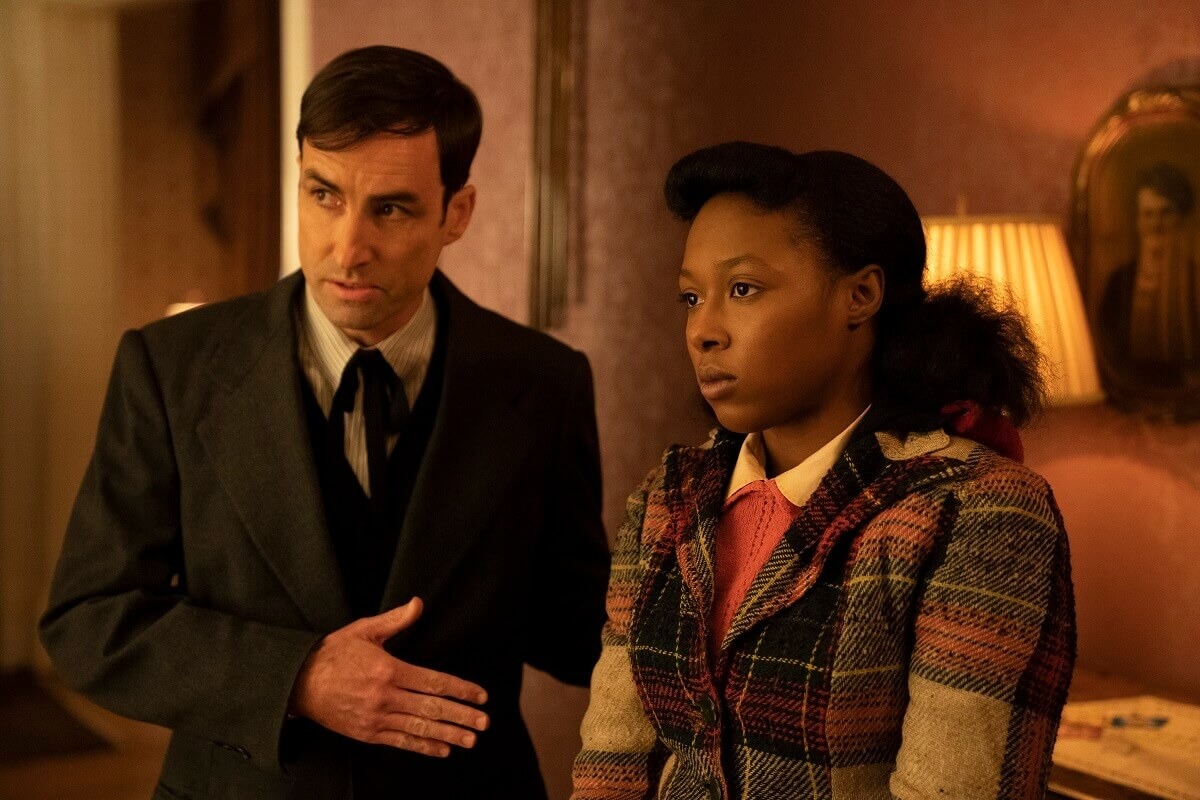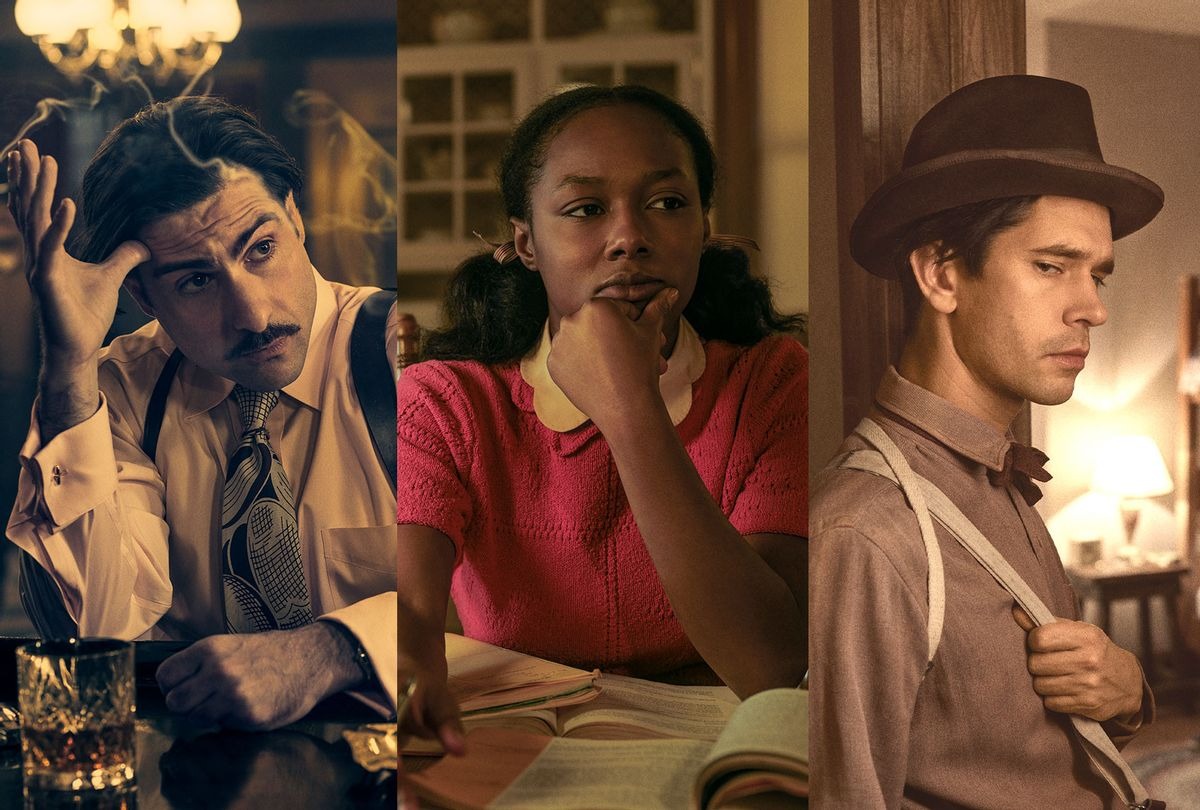The foundation of season four was shaped around understanding Mike Milligan’s background. Once thoughts began forming about this unique Black character operating in a predominantly white setting, with no clear place of belonging, the questions began: who is he really, and where did he come from?
From there, the idea of two families swapping sons took root. It made sense that Milligan’s surname wasn’t inherited but rather selected, perhaps as a mark of transformation. A Black boy nurtured by an Irish-American, who himself had been under the guardianship of Jewish and Italian families, started to feel like a reflection of American history itself.

As the story developed, the focus moved beyond just Satchel’s transformation into Mike Milligan. Instead of spending ten episodes explaining that journey alone, a wider story emerged — covering the lives of his father Loy Cannon, and other characters whose fates became central to the plot.
The story became richer and broader, placing Satchel and Ethelrida at its heart, indicating the future carried by the next generation. That broader perspective shaped the direction of the entire season.
Other Versions of the Finale Were Considered
Alternative ideas for how to close the season were considered. One plan would have shown Milligan in the 1990s, working within the Kansas City mafia’s corporate structure — suggesting he had blended into that world to survive. That storyline would have reflected his decision to hide his roots to succeed.
Although this version was shot, it didn’t provide the satisfaction that was needed at that point in the finale. Introducing a fresh set of scenes half an hour before the end felt disjointed and incomplete. The new direction started resembling a separate storyline entirely.
For a moment, it seemed necessary to do another shoot in Los Angeles to address this issue. However, while reviewing the episode with the editor, they chose to change Ethelrida’s school report to the final sequence, allowing it to roll into the credits.
This gave the ending a 1970s cinematic style, with emotional weight that lingered. That choice made the farewell more touching. The character’s sadness became more evident. The audience’s bond with him resurfaced. What mattered at that moment wasn’t additional dialogue — it was visual storytelling.
Considering Milligan’s Typically Talkative Nature
It’s interesting because Mike Milligan is known for being expressive and talkative. There was even a powerful closing monologue written for him.
Still, when taking into account all that had occurred over ten-plus hours — especially the emotional turbulence of the final 30 minutes, including Loy’s temporary triumph, followed by his sudden murder just as things seemed hopeful — it became clear that the audience would need a moment to sit with that.
Jumping straight into a “look how he turned out” moment would feel too abrupt. It was better to allow the emotion to settle, rather than forcing cleverness into that space. As seen in Fight Club, cleverness doesn’t replace artistic truth. Art needs honesty, not just smartness.
Will Mike Milligan Ever Return?
The chance of seeing Milligan again remains uncertain. Season two wasn’t followed by a continuation of Alison Tolman’s character either, so it doesn’t always work that way. Bokeem Woodbine’s performance remains unforgettable.
His first appearance in season two was something special. Without any prior discussion, he brought a distinctive voice and presence that elevated the role. Though the script supported it, the execution made it stand out in a new way.
The plan isn’t currently to bring him back — even though his presence has a strong pull.
Why This Season Was Set in the Past
Concerns often arise when past characters or stories are revisited — as though the writers are out of fresh ideas. But there was energy in making this season a period piece. The show loosely bases its tales on “The History of True Crime in the Midwest,” treating the whole series as part of a historical document.
Connections can always be found, especially when looking at crime figures like Al Capone or Bugsy Malone — everything seems tied together. Still, the intention isn’t usually to follow a single character across seasons.
That approach never came naturally, not even in Legion, where extending a character’s arc across seasons two and three felt unusual. That’s why each season in that series felt like its own project. With time away from season two of Fargo, only Mike Milligan’s story lingered.
That spark led to season four. What might come next remains unknown for now.
Killing Off Most of the Cast
It’s not easy to follow up on season four directly, especially with so many characters gone by the end. The idea behind it was shaped from the beginning. To define Fargo simply, one might say it’s a tragedy wrapped in hope.
From the early writers’ room discussions, it was clear that while death is inevitable, what makes a story truly tragic lies in its details. For instance, the Fadda brothers had just reconnected when Gaetano accidentally killed himself — a sad moment made worse by the timing.
Odis’s end came from the same compulsions that haunted him throughout. Even Swanee’s death, which matched her desire to die in a fight, was painful for Zelmare, who assumed they would die together. When the cast was still being decided, the question came up: why create over twenty main characters?
The explanation was that the plot needed it. Ethelrida’s journey required surrounding characters. Loy, as a crime boss, needed a crew. The Fadda family needed their structure. With many destined to die, their roles had to be developed properly.
Personal stakes require real individuals. The prison escapees were especially fun to write. Though the opening two episodes were dense, the pacing later picked up. When Doctor Senator died, it became clear the story was moving forward quickly.
The ninth episode — a black-and-white one — featured a tornado killing two major characters. That choice felt grounded. Unlike the usual cause-and-effect formula, the unpredictable event added emotional weight.
The End of Loy Cannon
Loy’s fate was connected to a larger idea of power and safety. Odis’s journey reflected this too. Loy believed that gaining power would protect his family — an idea shaped by his experience as a Black man in America. However, what happened was the opposite: the more power he chased, the more exposed his family became.

As the story neared its end, he lost his power and was reduced to working under others. But upon returning home, he looked through the window and saw his family together. His missing son was back. That moment offered a kind of peace, the first real one in a long time.
He believed he had won something. That was the tragedy — the moment he found peace was also his last. Still, there was beauty in that final recognition before his death.
Plans for Season Five
Ideas for another season are already forming, though they are not the current priority. At present, the focus is on completing a book that’s been pending for a long time. Time away from the show is important. Each season involves heavy thematic work, character depth, and moral questions.
These stories dig into what people do for money, questions of right and wrong, and human choices. Once a season wraps up, there’s usually a feeling that there’s nothing left to add. But after some distance, fresh questions and ideas return.
Even then, themes don’t create stories. Characters do. Time is needed to uncover the heart of the next chapter. What’s it “About”? What is it about? That takes time — it can’t be rushed.
Is a Present-Day Season Possible?
A season set in present-day conditions is unlikely for now. Since the series uses “This is a true story” as its opening, enough time needs to pass between events and storytelling for it to feel like documented history. That change from journalism to historical account must take place.
Season three unexpectedly brushed against real life. Its themes questioned the very nature of truth — including Russian storylines — and the production overlapped with the 2016 election and debates around “alternative facts.”
The result was that viewers found it hard to engage with the fiction while those same ideas were being experienced in real-time. Given space, that season may resonate better later. But while still living through similar issues, people may not want a story that mirrors their current struggles.



